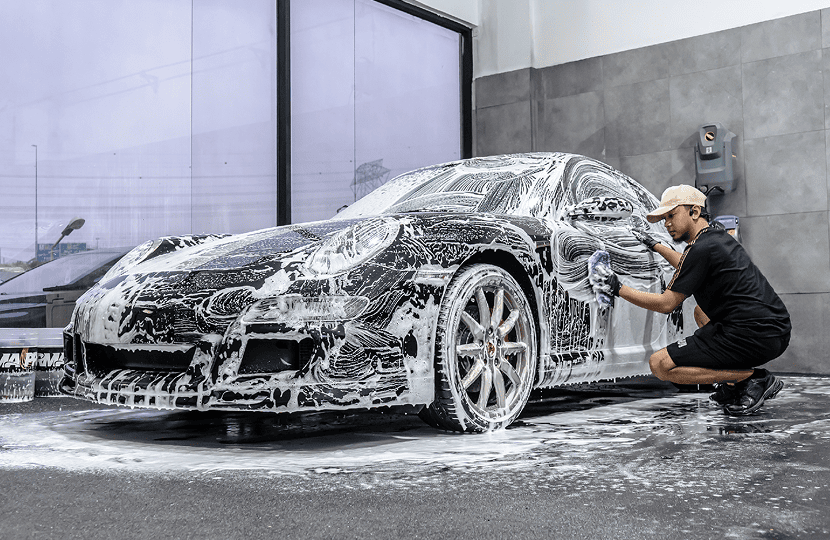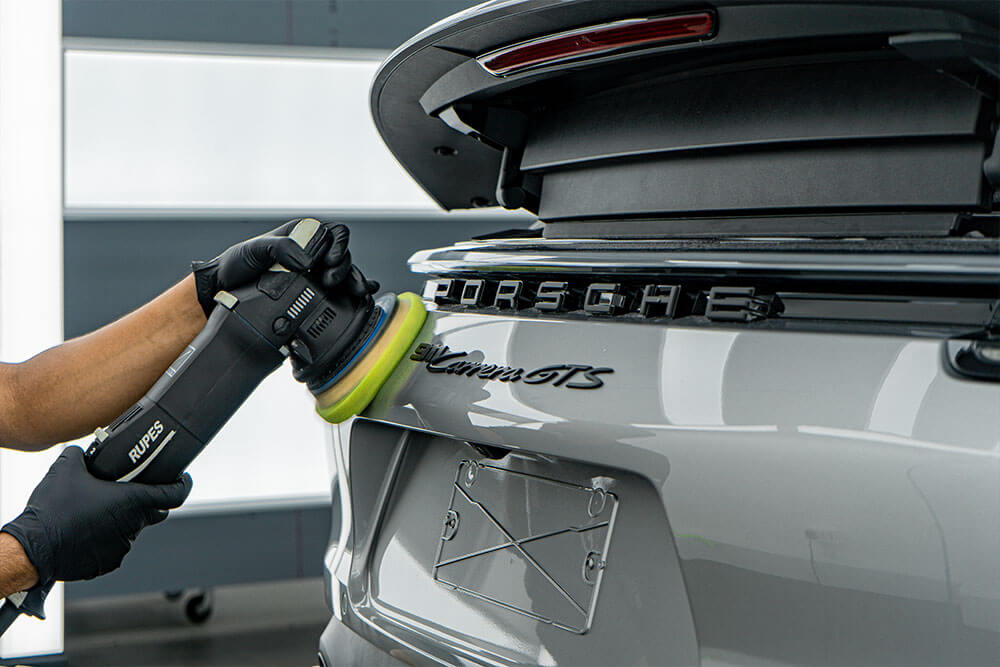
Okay, so here’s the deal—you’ve just spent a ton—AED 13,000 or more—on getting your car wrapped in this amazing self-healing PPF. It’s got a 10-year warranty, and it’s supposed to keep your ride looking awesome for years. But now, there’s the temptation to grab that polish or wax you’ve been using forever, right? But hold on, that might actually be the worst thing you can do.
The stuff you’ve been using for years to keep your car looking shiny and new—well, it’s not made for PPF. You’re working with advanced material science here. The self-healing top layer of your film doesn’t like things like abrasive polish or petroleum-based waxes. You destroy the film with those products. And that’s not something you want to do to your car after dropping a lot of cash on it, right?
The “Don’ts” – What You MUST Avoid on Your PPF Coating
Before we talk about how to maintain your car’s perfect finish, let’s first chat about what you absolutely should NOT do. Trust me, this is the key to keeping your PPF intact and looking fresh for years.
1. Abrasive Polishes & Compounds
This is a hard no. Never use an abrasive polish or compound on your PPF. Traditional polishes are meant for cars with clear coats, and they cut into the paint. That’s not what you want on your PPF. It’ll scuff it up and damage the self-healing properties. So yeah, no abrasives—they’ll make your film look dull and ruin the protection.
2. Waxes with Petroleum Distillates or Dyes
Alright, a lot of carnauba waxes have petroleum distillates or dyes in them. Guess what? Those chemicals don’t play nice with PPF. Your film is porous, which means these chemicals can seep into the material and cause it to yellow or stain. This isn’t something you can fix later on. So, if you see petroleum or solvents listed in the ingredients—don’t use it on your PPF.
3. Aggressive Clay Bar Use
The clay bar can be great for paint, but it’s a bit of a risk with PPF. The top layer of your PPF is softer than your car’s paint, so using the clay bar too aggressively or without enough lubrication could end up damaging the film. It’s a risky move and probably best avoided if you’re not a pro.
The “Dos” – How to Safely Enhance Your PPF’s Gloss and Protection
Now that you know what to avoid, let’s talk about how to care for your PPF the right way. Trust me, it’s pretty simple, and when you follow the right steps, your PPF will look amazing and last longer.
1. Use a Dedicated PPF Sealant or Ceramic Coating
Listen up—this is the golden rule: get yourself a ceramic coating or PPF-specific sealant. These products are designed for PPF, so they’ll bond perfectly with the film and give you a super glossy finish. These products are made to work with the film, not damage it.
Here’s what it’ll do for you:
- Hydrophobic Magic: Water will roll off your car like it’s nothing, taking dirt with it. It’ll be so much easier to clean and keep your car looking fresh.
- Deep Gloss: Want that extra shine? A ceramic coating gives your PPF a deeper, richer gloss. It’s like the cherry on top of your investment.
- Extra Layer of Protection: Think of it as extra armor on top of your PPF. It’ll block UV rays, bird droppings, and tree sap from harming your film. So, your PPF stays looking brand new longer.
2. Use Non-Abrasive Finishing Glazes (For Experts Only)
For that temporary shine boost, you can use a non-abrasive finishing glaze. But heads up—this is for people who know what they’re doing. It’s a quick, temporary fix if you want to make your car look extra shiny before a car show or a special event. However, for long-term protection, the ceramic coating or sealant is always your best bet.
Evolve Your Maintenance, Protect Your Investment
Here’s the bottom line: old-school methods like abrasive polishes and petroleum waxes? Yeah, they’re no longer useful for modern PPF. In fact, they’re damaging. If you’ve got PPF, you need to evolve your car care routine.
For most car owners, a simple hand wash is all that’s needed to keep your PPF looking fresh. But if you’re looking for that extra shine that turns heads, the only way to go is with a ceramic coating or PPF-specific sealant. These products will bond with the PPF and make it look even better without damaging it.
Protect Your Protection
Here’s what you really need to take away: retire the old products that could damage your PPF. Forget about those abrasive polishes and harsh waxes. It’s time to step up your game and go with dedicated PPF solutions. This will give you the ultimate protection and that showroom shine without compromising your investment.


